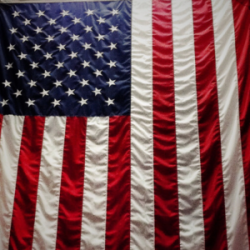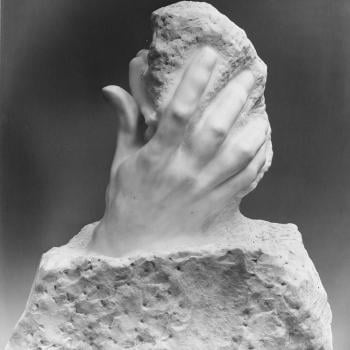Feeling uncomfortable at home, Harvey moved to San Francisco. He went to Pentecostal, Catholic, and Jewish services looking for something which would compel his faith. He also wrote to President McKay. The president responded, encouraging Harvey to do the Lord's will but leaving it up to him to discover what that might be in his case. He received no answer to his fasts and prayers and eventually gave up trying to know. In this frame of mind, he was approached in 1960 by two young men easily recognizable as LDS missionaries. Not knowing his background, they persisted in contacting him until he consented to lessons. After a few lessons, the senior companion, Andrew Laudie, sensing that their contact knew more than he was revealing, stopped the discussion and asked, "Brother Harvey, were you ever a missionary?" Harvey said, "Yes." With tears in his eyes, Elder Laudie rose and hugged his investigator. For Harvey, the embrace was spiritual as well as physical; he felt something he had not felt for years. This was the turning point. He was now headed back.
Rebaptized in October 1961, Harvey requested the priesthood the following summer. Apostle Brown arranged an interview with Joseph Fielding Smith during July 1962. After some conversation, Apostle Smith asked, "Do you know that David O. McKay is a prophet of God?" -- the same question Harvey had confronted under much different circumstances almost four years earlier. Harvey said, "Yes." Apostle Smith arose without further conversation, circled to the back of his chair, laid his hands on Harvey's head and conferred the priesthood.
Others separated from the Church because of the Tucker affair eventually returned. Of the nine excommunicants, Loftin Harvey and his friend, Neil Poulsen, were rebaptized. Four others who left France without testimonies, regained them, namely David Shore (Tucker's Marseille companion who sent the apostate literature from Utah), the companions, Ronald Jarvis and Harvey Harper who left their missions early, and Marlene Wessel. David Shore and Ronald Jarvis were both excommunicated after returning from their missions but were later rebaptized. Harvey Harper completed his term of missionary service in the Eastern States Mission. Marlene Wessel returned to France to complete her missionary service, having obtained an assurance that this was the course she should follow.
A decade passed. In 1968 Apostle Marion G. Romney visited the mission. Staying up late to visit with the staff at the mission home, he finally stood up to retire. At the doorway, he turned as if to say something that had just crossed his mind. "Oh, brethren, did I mention about Elder Tucker. He passed away recently." Only a few of the missionaries understood the reference. William Tucker had died of acute appendicitis. Joining the LeBaron movement in Mexico after leaving France, he had eventually abandoned it as well, dying an avowed atheist in 1967.
Of the seven, four elders and three sisters, who never rejoined the Church, all lived in Mexico for some time and supported the LeBaron movement. Stephen Silver, Dan Jordan, and J. Bruce Wakeham served as apostles in that group along with Tucker. Marilyn Lamborn and Nancy Fulk married Tucker, the latter union ending in divorce. Juna Abbott married Wakeham. Dan Jordan became a close associate of Ervil LeBaron and was indicted for the murder of Joel LeBaron. He left the movement and moved to Colorado. While on a hunting trip in Utah in the fall of 1987 he was killed by an unknown assailant.
Facing the opposition of nonmembers is the common fate of missionaries. Facing opposition from within their ranks was the uncommon fate of the French missionaries of 1958. Uncommon circumstances convulsed to fling individuals into paths centrifugal to that proclaimed by either faith. For Loftin Harvey, the hope to "know" was not fulfilled until long after he was publicly branded an apostate. The trial for unnumbered others also drawn into the circle of Tucker's beliefs was conducted less publicly. The verdicts rendered remain the private legacies of each individual who followed Tucker to the edge of their ken and to whatever lay beyond.
Kahlile Mehr is a professional librarian living in Centerville, Utah, with his wife, Marolyn Price Mehr, and their five children. He holds an M.S. in history and has published before in Dialogue, the Ensign, and the Journal of Mormon History.




